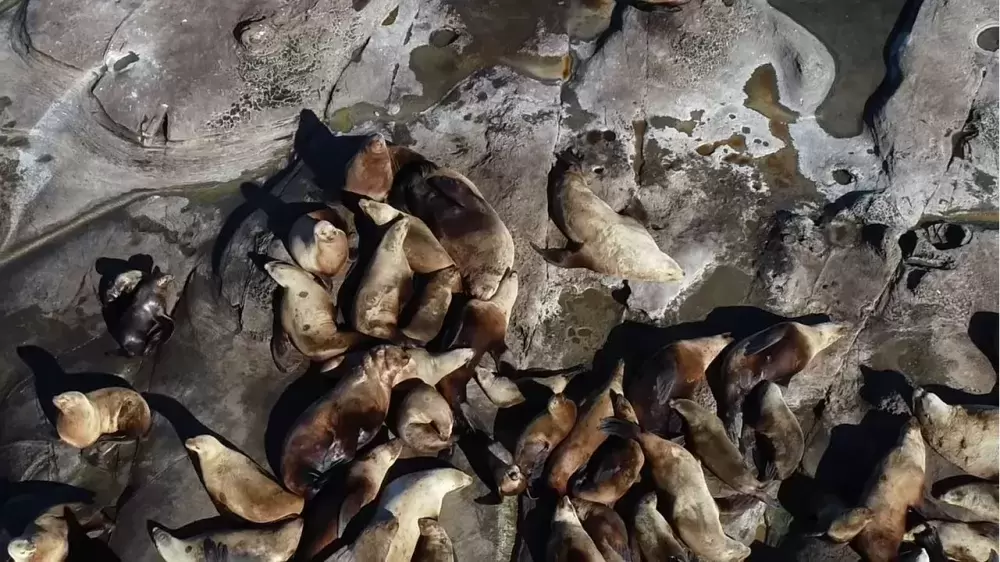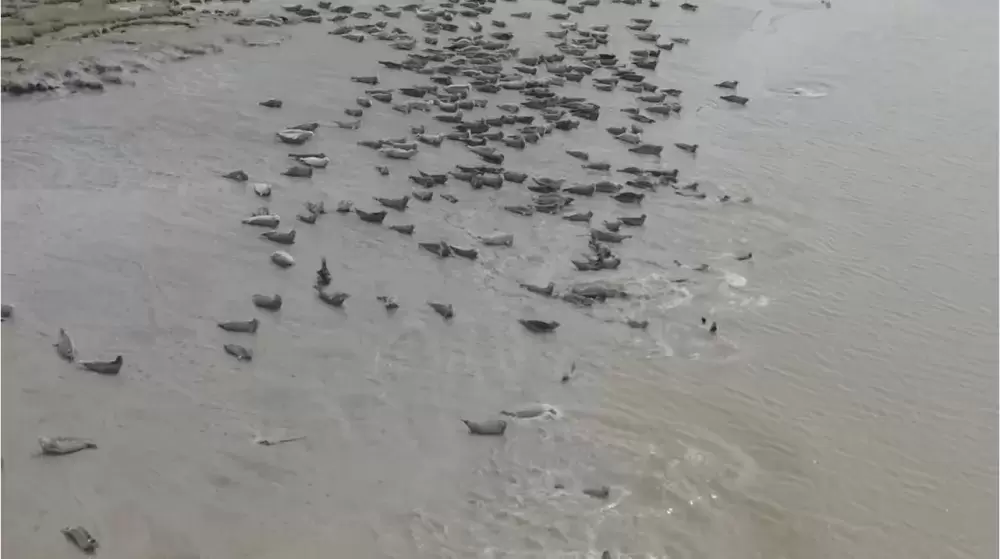Are seals and sea lions partly responsible for the decline of Pacific salmon stocks?
As the state of salmon on the West Coast continues to look grim, with some stocks facing extinction, the healthy population growth of pinnipeds has led some to wonder how much of a role the predators are having in the equation.
Some First Nations have called for bringing back seal and sea lion hunting, a practice that was banned over 50 years ago, while the Assembly of First Nations has lobbied the federal government for management strategies that better control the opportunistic predators. In the summer of 2018 the AFN passed a resolution to work with Fisheries and Oceans Canada to “implement targeted management strategies in regard to the growing population of seals and sea lions throughout the entire B.C. coast.”
The animals have grown in numbers since the harbour seal hunt ended in 1967 and when stellar sea lions became protected in 1970. Now Canada’s Fisheries Act prohibits disturbing pinnipeds on land or in the water.
This has allowed the animals’ populations to return to historically normal levels that were seen before the widespread hunt was permitted in the late 1800s. On the West Coast this amounts to approximately 100,000 harbour seals.
“Harbour seal populations grew exponentially during the 1970s and 1980s, but growth rates began to slow in the 1990s,” wrote Lara Sloan of the DFO’s media relations in an email to Ha-Shilth-Sa. “The population now appears to have plateaued and stabilized in the Strait of Georgia, and the rate of population increase has slowed elsewhere along the B.C. coast.”
“Stellar sea lion populations have increased slightly, with the latest 2013 population estimate ranging from 33,000-39,000 animals in the summer months, increasing to approximately 48,500 in the winter,” added Sloan.
As fisheries and coastal communities continue to struggle with meagre forecasts, a lifelong commercial fisherman is working with the University of Victoria to better determine if pinnipeds are eating more than their fair share of migrating salmon. Thomas Sewid, a commercial fisherman of 45 years and member of the Kwakwakaʼwakw Nation, is currently travelling through the Vancouver area, Sunshine Coast and Vancouver Island to collect stomachs from seals and sea lions. With the goal of gathering 100 stomachs, Sewid plans to take the samples to the University of Victoria, where they will be analysed to determine the types of fish the animals are eating and how much.
Some First Nations have seals or sea lions in their communal licences to harvest a limited amount for social and ceremonial purposes, permits that could allow Sewid to collect the stomach samples legally.
“We need to harvest those seals to know what salmon are being eaten, because they can tell by the DNA of the juvenile salmon and stomachs where those salmon originated from,” said Sewid, who is president of Pacific Balance Marine Management. “Some of them will have pit tags in them.”
Sewid is offering $50 for each stomach, although forms must be filled out to ensure that the pinnipeds were harvested legally under a First Nation’s licence for cultural and ceremonial purposes. He’d like to focus on pinnipeds that are found in “choke points”, narrowing parts of a river where high volumes of migratory salmon cross, like the Somass Estuary by Port Alberni.
“Under food, social, ceremonial I’m not allowed to buy the seals’ stomachs, but I’m allowed to give them a $50 donation for bullets and fuel,” he explained, noting that the harvester’s status card and firearm licence must be up to date for the samples to be collected. “You open up the belly of the animal, you zap strap it on either side of the stomach, you cut it out, zap strap to keep the contents from oozing out, stinking and making you puke and gag, you throw that in an industrial plastic bag.”
Over his life on the water Sewid has witnessed the decline of pacific salmon.
“I didn’t fish last summer for salmon. I did fish the year before – I made $3,000 when I should have made $30,000 on average like in the ‘80s,” he said, stressing that he sees pinnipeds eating an excessive volume of young salmon as the fish migrate. “Puntledge River in Courtney, the seals lie on their backs at night under the bridge and with the streetlights. They’re sucking in juvenile chum and pink and chinook like no one’s business.”
While Sewid has advocated for a commercial hunt to better manage coastal ecosystems, the DFO does not appear open to bringing back the seal and sea lion hunt.
“Commercial fisheries are not a means of controlling populations,” said Sloan. “While seals and sea lions do eat salmon, salmon represent a small proportion of their diet. Seals and sea lions also eat other predators of salmon and herring, such as hake, and are an important food source for threatened transient killer whales, whose numbers have been increasing in inshore waters along the B.C. coast in recent years.”
Among biologists, it remains up for debate just how responsible pinnipeds are for the decline of Pacific salmon. South of the border, a study is underway by Western Washington University and the Makah Tribe to better determine what pressures seals and sea lions are putting on the food chain. Using molecular analysis techniques and by identifying bones in pinniped feces, the study aims to determine what salmon the predators are eating, and how much.
In 2016 and 2017 a case study was conducted in the Strait of Georgia, where the highest concentration of harbour seals can be found. Analysis of seal feces found that the animals had a wide range of prey, with salmon being the minority of what they consumed. From April to July of those years salmon accounted for just three per cent of what the seals ate, with other fish like herring, surf perch, hake and pollack making up much more of the animals’ diet. From August to November the case study found that salmon made up 35 per cent of the diets of seals who were found in estuaries, while non-estuary samples found that salmon accounted for 10 per cent.
Although the DFO acknowledges the historical importance of harvesting seals and sea lions for First Nations’ “social and ceremonial purposes,” Sloan stated that “Pacific harbour seals are not to be consumed by humans due to possible health risks.”
But many Nuu-chah-nulth elders would disagree.
“To this day we still eat harbour seal,” said Ray Williams of the Mowachaht/Muchalaht First Nation, recalling the use of seal blubber fat for oil. “My late wife used to make that for us. She would extract the oil from the fat. She would boil it and the oil would surface on the top of the water, and she would scrape the oil from the top of the water, put it into a dish, and then into a bottle.”
As one of the few people who live in the ancient coastal village of Yuquot, seafood still accounts for a large part of the 80-year-old’s diet. But he has seen many others shift to the more processed food that is easily accessible in towns and cities.
“That’s how so many of our elders had passed away so quickly, because of a change in diet,” said Williams. “They have no choice but to walk away from the food that kept them healthy.”
Anyone interested to providing a pinniped stomach sample can contact Thomas Sewid at tom.sewid@gmail.com or 604-724-7325 to obtain the necessary forms and information.








